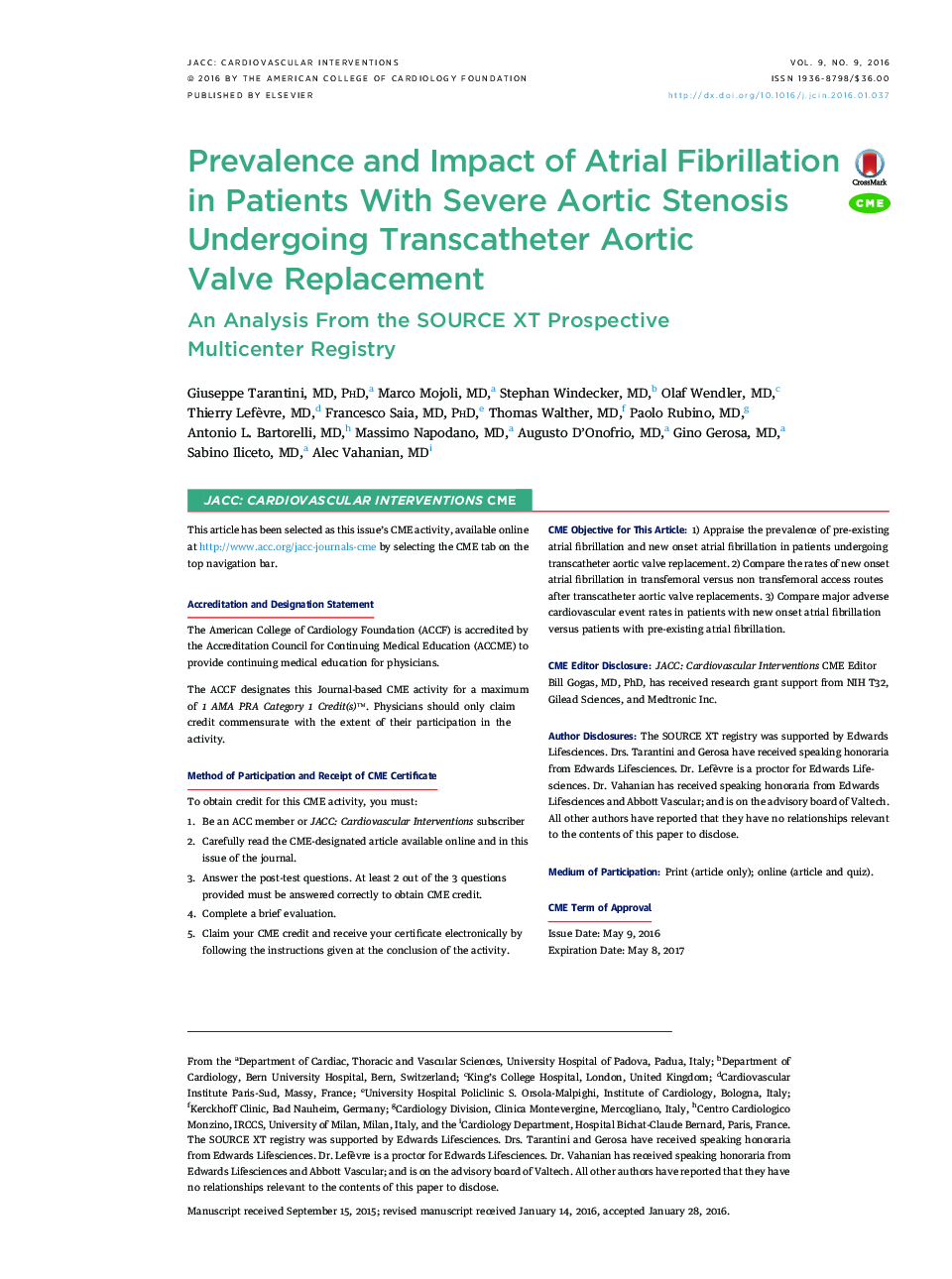| Article ID | Journal | Published Year | Pages | File Type |
|---|---|---|---|---|
| 2939522 | JACC: Cardiovascular Interventions | 2016 | 10 Pages |
ObjectivesThe aims of this study were to assess the epidemiology of atrial fibrillation (AF) in patients treated with transcatheter aortic valve replacement (TAVR) and included in the large prospective SOURCE XT (SAPIEN XT Aortic Bioprosthesis Multi-Region Outcome Registry) study and to evaluate their outcomes according to the presence of pre-existing or new-onset AF (NOAF) (defined as AF occurring within 30 days after TAVR).BackgroundData on the epidemiology and clinical impact of AF in patients undergoing TAVR are scant and limited to small retrospective studies.MethodsThe SOURCE XT study is a multicenter, prospective registry of consecutive patients treated with the SAPIEN XT valve at 99 sites in 17 countries. Follow-up was scheduled at discharge, 1 month, 1 year, and yearly thereafter. Patients (n = 2,706) were categorized according to the presence of pre-existing or NOAF.ResultsThe prevalence of pre-existing AF was 35.6%, whereas NOAF occurred in 7.2% of patients. Both pre-existing AF and NOAF correlated with worse clinical outcomes compared with patients in sinus rhythm, including all-cause death, cardiac death, and bleeding events. NOAF was associated with higher rates of stroke at 2 years compared with sinus rhythm. Independent predictors of NOAF were age (hazard ratio: 1.1), New York Heart Association class III or IV (hazard ratio: 1.9), nontransfemoral access route (hazard ratio: 3), and balloon post-dilation (odds ratio: 1.6). No interaction was observed between any degree of post-implantation paravalvular leak and NOAF.ConclusionsIn the large dataset of the SOURCE XT registry, the presence of either pre-existing or NOAF increased all-cause and cardiac mortality and bleeding events. NOAF was associated with increased stroke rates at long-term follow-up.
